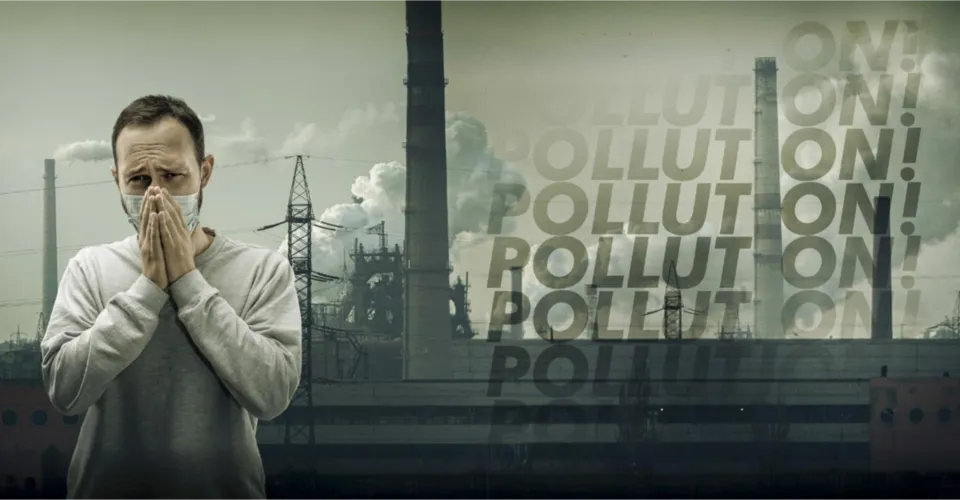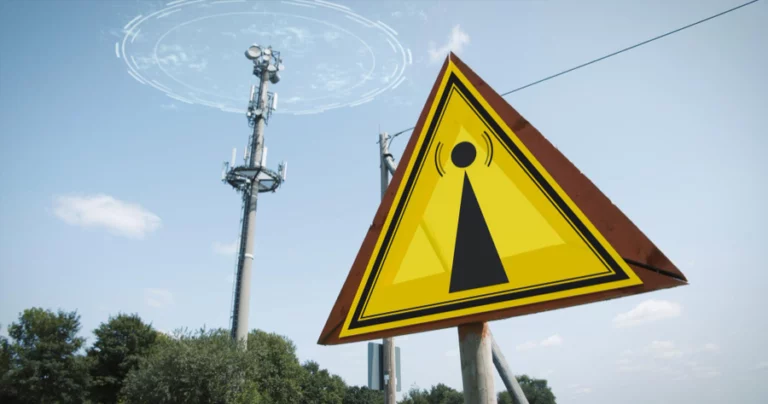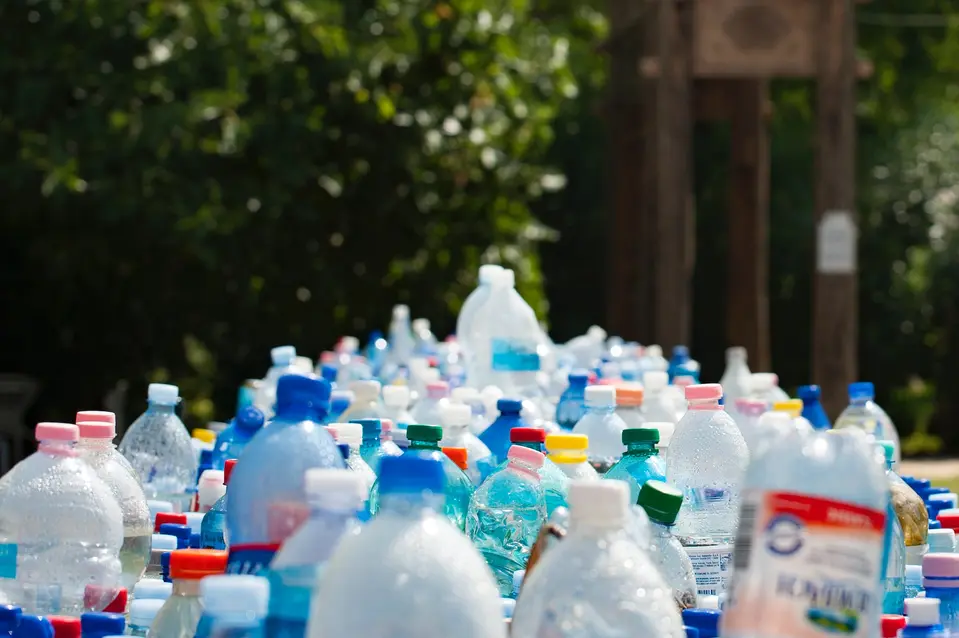The Link Between Toxins And Chronic Illness
Chronic illnesses, such as heart disease, diabetes, and autoimmune disorders, affect millions worldwide. While a variety of factors contribute to these health issues, one area gaining attention is the role of environmental toxins.
Everyday life exposes us to a range of chemicals and pollutants. These are found in the air we breathe, the water we drink, and even the food we eat. From industrial emissions to household cleaning products, these toxins are nearly impossible to avoid completely.
Research increasingly points to the significant impact of long-term exposure to these toxins on our health. Scientists are exploring how continuous, low-level exposure could be triggering or exacerbating chronic conditions.
Understanding the link between toxins and chronic illness is essential. It empowers individuals to take proactive steps and helps shape public health policies aimed at reducing exposure risks. The growing body of research in this field underscores the importance of awareness and action to better protect our health.
Understanding Toxins: Types, Sources, and Health Impacts
Toxins come in various forms. Chemical toxins, such as pesticides and industrial pollutants, can be found in the air, water, and soil. Biological toxins, like mold and bacteria, are often hidden in our homes and workplaces. Environmental toxins encompass both, affecting us through everything from everyday consumer products to large-scale industrial processes.

Common sources of these toxins include vehicle emissions, plastic containers, household cleaners, and unfiltered tap water. Even seemingly harmless items like personal care products can harbor harmful substances. It’s surprising how many toxins we encounter daily without realizing it.
The way toxins affect our bodies can vary. Some might cause immediate symptoms like respiratory issues or skin irritation. Others, however, might lead to long-term health problems, including hormonal imbalances, neurological disorders, and cancers. The impact of toxins isn’t always immediate, making it tricky to link exposure to chronic illness directly.
Various factors influence how susceptible we are to toxin-related health issues. This includes age, genetics, lifestyle choices, and even socioeconomic status. For example, children and elderly individuals often have heightened vulnerability due to their developing or weakened bodies. Socioeconomic factors can also play a role, as communities with fewer resources might have higher exposure rates due to environmental conditions.
Understanding the types, sources, and impacts of toxins can help us make informed decisions about our environment and lifestyle. Being aware of what we come into contact with daily is the first step towards minimizing risks and protecting our long-term health.
How to Identify Toxins in Your Environment
Identifying environmental toxins in your surroundings is a crucial step in reducing exposure and protecting your health. Here are some practical tips to help you recognize and minimize these harmful substances:
Household Cleaning Products
Many household cleaning products contain chemicals that can contribute to chronic illnesses. Look for labels that list ingredients such as ammonia, bleach, and phthalates. Opt for natural cleaning products that use plant-based ingredients and are free from harsh chemicals. You can also make your own cleaning solutions using natural detox methods, such as vinegar and baking soda.
Personal Care Items
Personal care products, including shampoos, lotions, and cosmetics, can harbor environmental toxins like parabens, sulfates, and synthetic fragrances. Check the ingredient list and choose products labeled as organic or free from harmful chemicals. Natural remedies, such as coconut oil and essential oils, can be effective alternatives for skincare and haircare.
Processed Foods
Processed foods often contain additives, preservatives, and artificial colors that can negatively impact your health. Read food labels carefully and avoid products with long lists of unrecognizable ingredients. Opt for whole foods, such as fresh fruits and vegetables, and consider adopting a diet rich in organic produce to reduce toxin exposure.
Air Quality
Indoor air pollution can be a significant source of environmental toxins. Common culprits include mold, dust, and volatile organic compounds (VOCs) from paints and furniture. Improve air quality by using air purifiers, ventilating your home regularly, and choosing low-VOC paints and furnishings. Houseplants can also help filter toxins from the air naturally.
Water Quality
Contaminants in tap water, such as lead, chlorine, and pesticides, can pose health risks. Invest in a high-quality water filtration system to remove these toxins and ensure safe drinking water. Regularly check for updates on water quality reports in your area to stay informed about potential hazards.
Plastic Containers
Plastic containers can leach harmful chemicals like BPA and phthalates into your food and beverages. Replace plastic containers with glass or stainless steel alternatives. Avoid microwaving food in plastic containers, as heat can increase the release of toxins.
By being mindful of these common sources of environmental toxins, you can take proactive steps to reduce your exposure and protect your health. Incorporating natural detox methods and making informed choices about the products you use can significantly decrease the risk of chronic illnesses and promote overall well-being.
Chronic Illnesses and Environmental Toxins
Chronic illnesses can be debilitating, limiting one’s quality of life and productivity. Among the myriad contributors to these conditions, environmental toxins play an increasingly recognized role.

Many chronic illnesses are frequently linked to toxin exposure. Conditions such as asthma, allergies, and chronic obstructive pulmonary disease (COPD) have well-documented connections to pollutants and irritants in the air. Heavy metals like lead and mercury are associated with neurological disorders and developmental delays. Even some autoimmune diseases, such as lupus and rheumatoid arthritis, have been linked to specific environmental triggers.
Understanding the role of environmental factors aids in unraveling how chronic diseases develop and progress. For instance, long-term exposure to polluted air has been shown to increase the risk of cardiovascular diseases. Similarly, toxic substances in water supplies have been implicated in various gastrointestinal issues and cancers.
Case studies offer valuable insights into how environmental impacts shape health outcomes. Consider communities near industrial plants with higher rates of chronic illnesses. Another example is areas affected by water contamination, where toxins often create clusters of health problems among residents.
However, limitations exist in current research. Many studies face challenges in isolating specific toxins as definitive causes due to the complex mix of exposures over time. More comprehensive data collection and analysis are needed to establish stronger causal links and develop effective interventions. Despite these challenges, ongoing research continues to shed light on the critical connections between our environment and long-term health.
Understanding and addressing these environmental risk factors can drive better preventive measures and encourage healthier living conditions. It becomes a collective responsibility, spanning individuals, communities, and policymakers, to mitigate these risks and improve public health.
Protecting Your Health: Mitigation and Prevention Strategies
Reducing exposure to toxins starts with simple, everyday actions. Small changes in our habits and choices can significantly decrease the risk of developing chronic illnesses. For example, using natural cleaning products and avoiding plastic containers can help limit the number of harmful chemicals we come in contact with daily.

Policy and regulation play a crucial role in protecting public health. Governments and organizations must enforce stricter controls on industrial emissions, food safety standards, and water quality to reduce the overall burden of toxins in the environment. Supporting legislation that prioritizes environmental health is essential.
Healthcare providers have a significant role in educating patients about the risks associated with toxins and chronic illnesses. During medical consultations, doctors and nurses should discuss patients’ environmental exposures and suggest ways to reduce them. This proactive approach can help individuals make informed choices and adopt healthier lifestyles.
Technological innovations are paving the way for better detection and reduction of toxins. Advanced air and water filtration systems, for instance, can remove many harmful substances from our immediate environment. Emerging technologies can provide individuals and communities with the tools they need to monitor and improve their surroundings actively.
Taking personal and collective actions to minimize toxin exposure can have a profound impact on overall health and well-being. By staying informed and making conscious choices, we can protect ourselves and encourage broader societal changes that promote a cleaner, safer environment for everyone.
READ OUR RELATED POST:

Natural Ways To Detox Your Body
Learn how to detox your body naturally with these simple tips. Discover the benefits of hydration, exercise, sleep, and more for your health. Click here to read this article now.
Living with Chronic Illness: Managing Symptoms and Exposure
For those already dealing with chronic illnesses, managing symptoms becomes a day-to-day priority. Recognizing and reducing environmental toxin exposure can bring noticeable improvements to quality of life.
Start by evaluating your immediate environment. Use air purifiers at home to reduce indoor pollutants. Regularly clean and maintain HVAC systems to lower exposure to dust, mold, and other allergens. Simple habits like opening windows for ventilation or using fans can improve air quality significantly.
Pay attention to water quality. Investing in proper water filtration systems ensures that harmful substances are removed before consumption. This helps protect against gastrointestinal issues and other related health problems.
Diet plays a crucial role in managing chronic illnesses. Choose organic produce when possible to avoid pesticides. Limit intake of processed foods, which often contain additives and preservatives that can exacerbate symptoms. Whole foods and balanced nutrition support overall health and strengthen the immune system.
Integrative treatment approaches combine traditional medical care with holistic practices. Techniques like acupuncture, massage therapy, and mindfulness can help manage chronic pain and reduce stress. Working closely with healthcare providers ensures that these methods complement existing treatments safely and effectively.

Listening to your body and adjusting your environment can make a world of difference. Personal stories of individuals who have successfully managed their symptoms by reducing toxin exposure can be encouraging. They remind us of the significant impact our daily choices have on our health.
The Future of Awareness and Action
Environmental health literacy is gaining traction, with more people recognizing the connection between toxins and chronic illness. This growing awareness is leading to broader public discourse and action.
Advancements in research are on the horizon, promising deeper insights into how specific toxins impact chronic health conditions. Interdisciplinary studies combining environmental science, medicine, and technology will likely yield comprehensive data, guiding effective prevention and treatment.
Public health implications of these findings are profound. Communities and healthcare systems must adapt to new knowledge, implementing strategies to reduce environmental risks and promote healthier living conditions. Targeted education and proactive policy changes are essential steps in this process.
Community activism plays a vital role, driving change at local and national levels. Grassroots initiatives, advocacy groups, and individual efforts contribute to a collective push for cleaner, safer environments. Collaborative actions amplify the impact, making it possible to achieve significant progress.
By bringing together scientists, healthcare providers, policymakers, and the public, a holistic approach to tackling environmental health issues can emerge. This collaboration fosters innovation, creating solutions that protect and enhance public health for current and future generations.






